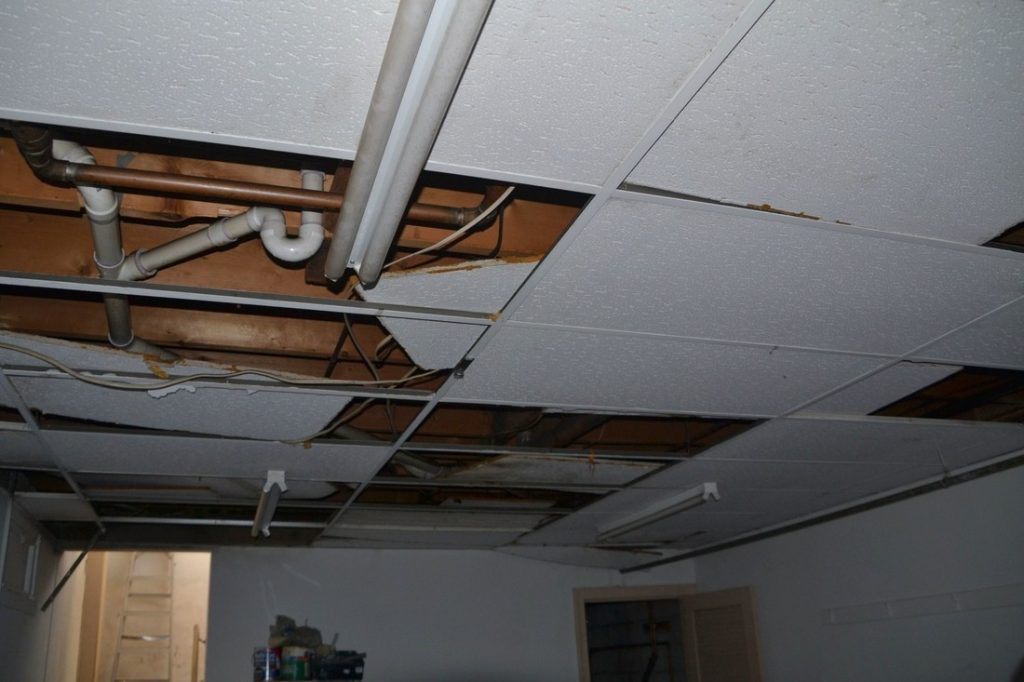
The Key Differences Between Water Damage and Flood Damage
Water damage and flood damage are two terms that are often used interchangeably. However, they have distinct differences that homeowners and property owners should be aware of. Understanding these differences can help you take appropriate actions in case of an emergency and ensure effective restoration and cleanup.
1. Source of Water

The main difference between water damage and flood damage lies in the source of water. Water damage usually occurs due to internal issues within a property, such as burst pipes, plumbing leaks, or appliance malfunctions. On the other hand, flood damage is caused by an external source of water, such as heavy rain, storms, or natural disasters like hurricanes or overflowing rivers.
2. Severity and Scope
Water damage can vary in severity and scope. It can range from minor leaks that only affect a small area to major incidents that cause significant damage to multiple rooms or even the entire property. Flood damage, on the other hand, is often more severe and widespread. It can result in extensive damage to the structure, electrical systems, and personal belongings.
3. Contamination Levels
Another key difference between water damage and flood damage is the level of contamination. Water damage usually involves clean water from a potable source, such as a supply pipe. However, floodwater is classified as Category 3 water, which is highly contaminated and poses health risks due to the presence of sewage, bacteria, chemicals, and other harmful substances.

4. Insurance Coverage
Insurance coverage for water damage and flood damage may also differ. Standard homeowner’s insurance policies typically cover water damage caused by internal issues, while flood damage requires additional flood insurance. It’s essential to check your insurance policy and consider purchasing flood insurance if you live in a flood-prone area.
5. Restoration and Cleanup Process
Water damage restoration and flood cleanup processes also differ due to the varying severity and contamination levels. Water damage restoration typically involves extracting the water, drying out the affected areas, repairing or replacing damaged materials, and addressing any mold or mildew growth. Flood cleanup is more extensive and may require additional steps, such as disinfection, decontamination, and structural repairs.
Importance of Water Damage Restoration and Flood Cleanup
Water damage and flood damage can have serious repercussions if not addressed promptly and effectively. Delayed or inadequate restoration and cleanup efforts can lead to further damage, mold growth, structural issues, and health hazards. It’s crucial to hire professional water damage restoration and flood cleanup services to mitigate the damage, ensure thorough cleanup, and restore your property to its pre-damage condition.
At Houston Restoration Group, we provide comprehensive water damage restoration and flood cleanup services. Our experienced technicians are available 24/7 and equipped with the latest tools and techniques to handle any water-related emergency. Contact us at 281-519-7318 or visit our website for more information about our services.
What is the difference between water damage and flood damage?
How does the restoration process differ for water damage and flood damage?
Important Facts and Statistics
– 10% of households will waste over 90 gallons of water each day through minor leaks and drips, leading to potential savings of 10% on water bills.
– Homes in the United States leak over one trillion gallons of water every year.
– The typical price range to restore water damage is between $1,240 and $5,342.
– Filing an insurance claim may help cover the costs of water damage restoration.
– The first 24 to 48 hours after a flood are critical, as this is the timeframe for mold and other microorganisms to start growing.
For more information about water damage restoration, flood cleanup, and mold removal services, visit the Houston Restoration Group website.

